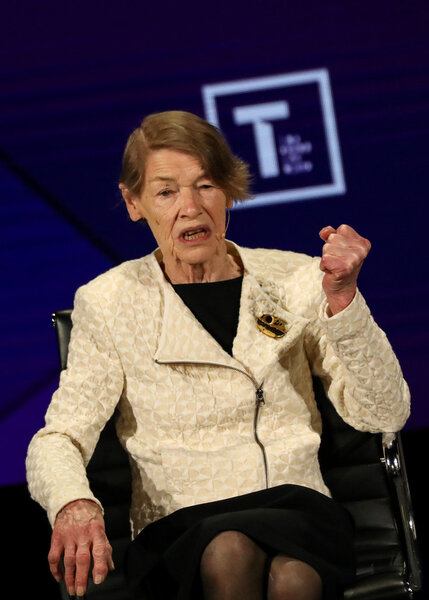Taking ‘old age’ out of its old box
Loading...
The famed British actress Glenda Jackson is treading the boards right now as King Lear, reciting from memory all 747 of the character’s lines during a 3-1/2 hour performance, eight shows a week. It’s an amazing encore for someone who first won accolades on film and stage decades ago and then left for a much different career as an elected politician in the House of Commons.
Now back on Broadway she’s among the few actresses to take on one of Shakespeare’s most demanding male roles. Asked about how “the age thing” affects her performance she responds: “The essential you is on the inside, it stays the same.”
In London, Maggie Smith, Ms. Jackson’s senior by a couple of years, is starring in “A German Life,” the disturbing real-life confessions of Brunhilde Pomsel, secretary to Nazi propaganda minister Joseph Goebbels. The “Downton Abbey” favorite is the whole show in a 100-minute, one-woman play. As expected, her performance has won over critics.
Should such achievements at what is considered “advanced” ages be celebrated? Or are they instead a new norm? Without all the stereotypes about aging, the answers to both questions would be yes. Yet in a culture that still makes jokes about older people and imposes notions of impairment on them, examples of mastery over aging are still needed, especially in societies with a rapidly rising older demographic.
Worldwide, the percentage of people over 60 will nearly double between 2015 and 2050, the World Health Organization reports. By next year, more people will be over 60 than under 5. The agency also notes that the experience of chronological age varies widely: Some 80-year-olds have physical and mental capacities similar to many 20-year-olds. Some athletes in their 80s and older run marathons.
Such shattering of stereotypes is essential to the debate about whether older people will be a boon or a burden to society. The U.S. government just reported that Medicare and Social Security, two key programs serving older Americans, face funding shortfalls in the near future.
One solution would be to encourage Americans to work longer before taking their benefits. That seems to be happening: More than 20% of Americans over 65 are working or are looking for work, a 57-year high; that figure was 10% as recently as 1985. More than three-quarters of older Americans (77%) say they are in good or excellent health with no limitations on the kind of work that they can do, reports the U.S. Bureau of Labor Statistics.
Some older Americans, of course, can no longer work. Some need to keep working to have enough income. Others enjoy the mental stimulation, the satisfaction of accomplishing goals, and the camaraderie of the workplace.
In recent decades, a phrase like “65 is the new 55” is updated to higher numbers. But why put a number on it at all? Whether commanding a theater stage or working in an office, expressing one’s talents and abilities can be satisfying at any age. The "essential you" does not have a sell-by date.





